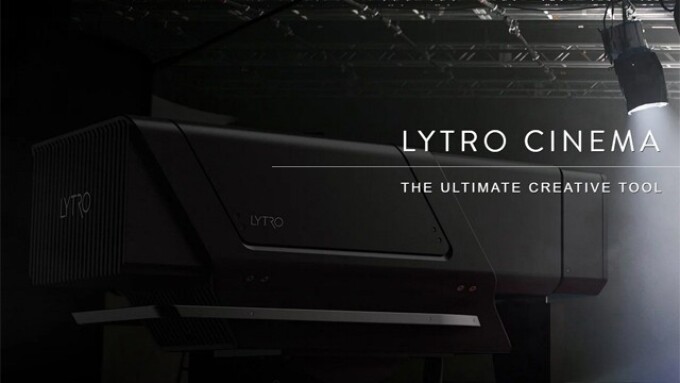LOS ANGELES — With much of their current focus on making the move to 4K and beyond, and shooting video for virtual reality applications, it is easy for adult producers to overlook the incredible strides being made in the ultra high-end of digital imaging — where technology is redefining visual reality while changing established production processes.
Take for example Lytro’s revolutionary Cinema Light Field camera, which boasts a mind-blowing 755 megapixels, churning out video at 300fps (10 times the frame rate of standard video), and generating a disc-busting 400 gigabytes per second of data in the process.
Forget 4K video — this is 40K video. It is also an entirely new way of capturing images that not only provides brightness and color information for each pixel, but spatial data as well — allowing editors to easily alter image parameters during post-production.
Don’t like where the image is focused? Change it. Want to see the scene from a different angle? No problem. Want to easily integrate live video footage into a CG environment? Forget those now obsolete green screens, Light Field technology provides a pathway to a seamless virtual realm.
According to the company, Light Field technology transforms creative camera controls from fixed on-set decisions to computational post-production processes, allowing for historically impossible shots.
“We are in the early innings of a generational shift from a legacy 2D video world to a 3D volumetric Light Field world,” says Lytro CEO Jason Rosenthal. “Lytro Cinema represents an important step in that evolution. We are excited to help usher in a new era of cinema technology that allows for a broader creative palette than has ever existed before.”
While Hollywood is set to embrace the Cinema Light Field, the undoubtedly terrifying price point will likely put it out of consideration for producers from “the other Hollywood” — Cinema rentals including the required data storage reportedly start at $125k — but as with all imaging technologies, time and uptake will eventually drive down prices and make it more accessible.
On the low-end, the company’s consumer models start around $100, with a sub-$500 upmarket model at B&H, allowing a cost effective way to experience Light Field imaging hands-on, but it’s on the high-end where the company really shines, such as through its Immerge VR video solution, which like Cinema, may be serious overkill for adult.
Wherever you are on the production food chain, the important takeaway is that digital imaging is rapidly evolving from a 2D to a 3D medium — with professionals edging ever closer to our virtual future, and fueling the next generation of adult content creation.








